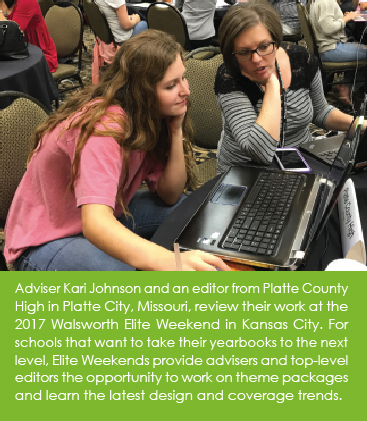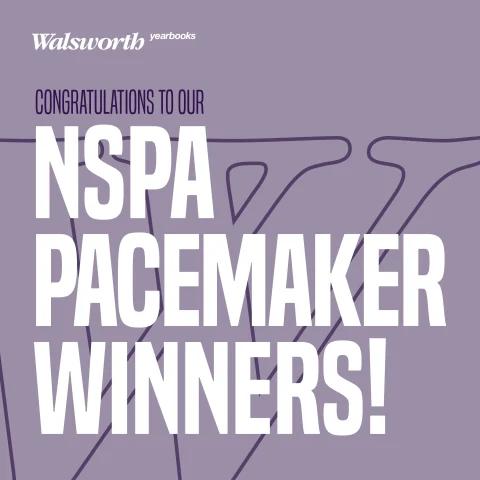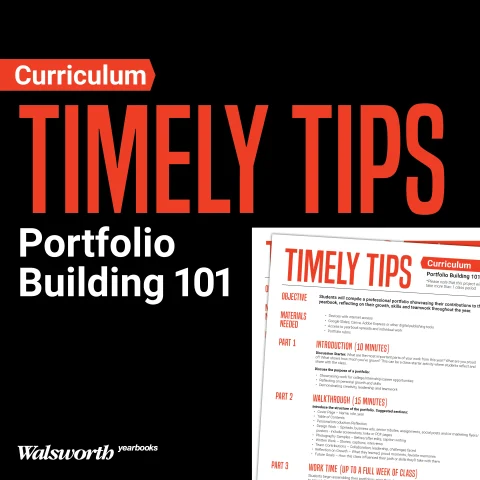Before your 2018 yearbook is delivered, distributed and the final bell rings, let’s get everyone on the same page about this yearbook theme thing. Let’s get them all thinking in a direction that the staff can work toward.
The 2019 yearbook staff needs a theme for their yearbook.
Gather the returning staff, sans graduating seniors, and the new staff, sit them down and begin brainstorming. Soon, a cacophony comes from the group:
Someone raises a hand and says, “I want the lion on the front.”
A second hand goes up: “It would be cool to something with a jungle.”
“I like school colors.”
“I found this when I Googled “yearbook themes.”
“I want to use boxes with arms coming out.”
“Did you see the book from So and So High? They used those boxes.”
This same scenario plays out in yearbook staff after yearbook staff every spring, summer and even fall. As the adviser or EIC, you sit in this discussion and try to wrap your brain around the thoughts and sounds coming from the group.
Let’s discuss how to develop a theme in stages.
Stage one: Atmosphere
You need to create an atmosphere that the yearbook is an important part of the school’s history. Prior to discussing theme, meet with your new staff and let them know the functions of the book and what is expected. Show them good examples of coverage that point to the historical-record aspect – fun spreads from the ‘80s that show big hair, fashion, student interests, etc.
Introduce them to what a strong yearbook does. Go through themes of some Walsworth Gallery of Excellence winners, the Possibilities idea book, Walsworth’s The Big Book of Theme Ideas eBook, “Finding your Theme” from Walsworth’s Yearbook Suite, and your school’s yearbook. Discuss with the 2018-19 new staffers why they like or dislike aspects of books they reviewed. Some good questions to ask would be:
- What do you see on the cover that makes the book inviting?
- What do you see on the spine?
- What items appear on or in every book we are looking at?
Discuss what type of words or phrases are represented. Ask your staff what the covers evoke.
- Is it a school-spirited theme (proud, loud)?
- Is it a traditional theme?
- Is the theme quirky, fun and a bit crazy?
- Would the average student understand what the book was about?
- Should there be pictures on the cover? Wild type? Crazy graphics?
- Is the theme bold? Sophisticated and classy?
- Does the font represent this feeling?
- Are the graphics sophisticated and modern?
Let this session end with a simple assignment: think about the things you saw. Next meeting, discuss the likes and dislikes.
Stage two: Inspiration and bonding
Now, allow the staff, in pairs, to go inside those same books and look at the endsheets, fonts and first several pages, which are theme-related. Ask them to write down whether the cover and first several pages set a tone for the inside.
- Do the graphics work?
- What information is supplied on endsheets?
- Is the structure of the book easy to understand?
- What information is on page one?
- Is the theme copy interesting to read?
- Is the theme copy helping the reader understand the book?
- Does the theme copy set a tone for what the reader will see inside the book?
- Does the photography set the tone of the theme?
Spend an hour or so on this topic. Send the new staff home with an assignment for the next meeting.
Stage three: Examples
 Have students return with examples found on the Internet, advertisements in magazines or even book covers with simple words or phrases that could represent a good theme. The staff should look for magazine ideas with great but not overwhelming graphics.
Have students return with examples found on the Internet, advertisements in magazines or even book covers with simple words or phrases that could represent a good theme. The staff should look for magazine ideas with great but not overwhelming graphics.
- Verbiage in ads and even headlines that get their attention
- Photography that helps readers relate
- Taglines and short, precise ad copy (hint: this could become a unit on writing theme copy)
- Trending colors
Post their ideas on a classroom wall. If need be, assign a grade to the assignment, such as: five ideas = A, four ideas = B, three ideas = C, etc.
Allow them to study all ideas placed on the wall without deciding on favorites or things that don’t work. Spend a few minutes and let staff members explain why they brought each example, what caught their eye.
Stage four: End-of-year project
After these theme topic discussions, you may want to assign an “end of the year” or “before we go to summer workshop” project.
This three-week project encompasses everything the group has been discussing about the theme. I suggest creating teams of newbies and current staffers. Provide enough freedom and structure to give the project ample opportunities for success. In other words, this is a BIG DEAL.
During the three weeks, graduating editors will teach lessons on branding, marketing, computer use and design. This keeps the soon-to-be graduates focused and allows them to pass down the skills they’ve acquired in the class. Walsworth has ample resources to help teach these lessons.
Each team needs a tri-fold presentation board and these project directions:
- Create a theme based on what you think the 2019 yearbook should be
- Include a mock-up of the cover complete with a spine design
- Remember to include all necessary information
- Include a mock-up of endsheets
- Create a logo or brand of the theme phrase
- Include a mock-up of the theme pages with fonts, colors and graphics
- Make a list of fonts used, colors chosen and types of graphics
- Write a mock-up of theme copy for the opening spread
If you grade these, give credit for creativity, meeting deadlines and planning.
During project work, have your graduating group create a few lessons on branding. Look at brands, logos, color schemes and marketing ideas from successful companies such as Coca Cola, Starbucks, Target and Disney. This teaching assignment can also be the final project for those students.
Stage five: Time to present
On presentation day, each team should think of itself as an advertising agency. They need to understand that the “pitch” is what sells the ideas. Teams should practice presentations, act and even dress professionally, and come prepared. (Again, assigning a grade may do the trick.)
You may have a clear theme winner from these presentations, or you may not. There could be division among your troops. Do not worry. Take your thoughts and presentations with you to camp. I strongly suggest not deciding on the final theme until after you, your EICs and staff attend a Walsworth summer workshop.
Stage six: Summer camp
Camp will provide more direction from talented trainers, advisers, other staffs and your sales representative. Bottom line, going to camp with some sort of direction will be beneficial. It will allow the group time to reflect and even make adjustments to the theme.
While at camp, there will be access to professional cover artists. Or, you can allow a talented student to create a cover.
Stage seven: It’s ALIVE
Once summer camp is completed, the staff can contemplate the book’s direction. At this point, everyone should be focused on the 2019 edition of the yearbook. And as classes resume in the fall, the staff can begin carrying out the new direction.
Finally, as the adviser, you may also want to think about having your EICs attend one of the Walsworth Elite Weekends held every fall around the country. At an Elite Weekend, your staff will work with experts who will provide feedback and direction so that the 2019 volume can be the best book ever produced at your school. Ask your sales rep for information concerning the Walsworth Elite Weekends and local summer camps. You will be so glad your staff attended.
To see dates and locations as they become available, go to walsworthyearbooks.com/eliteweekend and walsworthyearbooks.com/workshops.
Yes, this seems like a lot of preparation for a simple theme. Correct. And yes, it seems like it does not happen overnight. Correct again. This theme thing is really the backbone to the publication you and your students are creating.
Bottom line: Don’t rush. Let voices be heard. Let students think and imagine. You and the staff will create the best yearbook ever for 2019.





